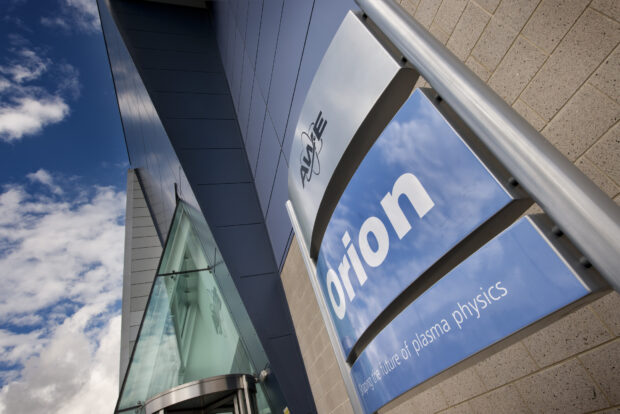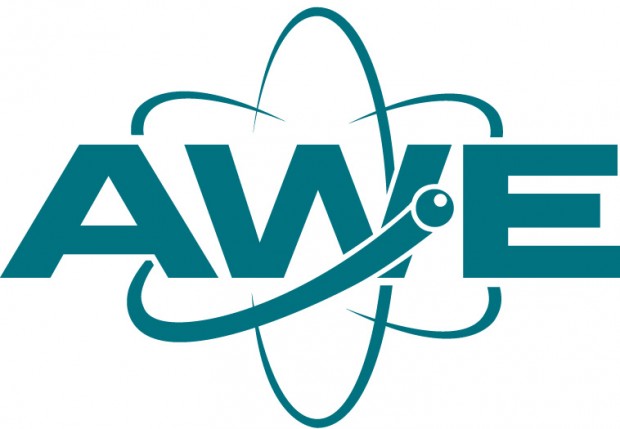
Scientists from a large international collaboration have succeeded for the first time to generate a laboratory analogue of a strong shock that takes place when matter falls at very high speed on the surface of extremely dense stars called white dwarfs.
Understanding the physics of these astrophysical objects is crucial, as they are considered as the possible progenitors of thermonuclear supernovae, being used in cosmology to measure the acceleration of the universe expansion linked to dark energy. To perform this spectacular astrophysics experiment, they made use of the world-leading powerful Orion laser facility at Aldermaston (UK) to evaporate a millimetre size target and produce a hot plasma flow during an extremely short duration – less than 100 nanoseconds (1 nanosecond equals 1 billionth of a second). There are as many nanoseconds in one second as they are seconds in about 30 years!
Recent theoretical works have shown that, by using adapted scaling laws, this tiny scale experiment can be scaled to its cosmic counterpart making it a valid replicate. Powerful lasers can therefore be used as microscopes to explore, during few nanoseconds, the high-energy radiation processes occurring in astrophysical objects from regions largely unresolved by the most powerful telescopes.

The Orion experiment which is the first academic experiment on this facility, confirms that these accretion shocks, which could not be studied in laboratory a few years ago at exact scale, can now be produced commonly in laboratory. This opens the way to more complete astrophysical experimentations in the laboratory using the most powerful Megajoule lasers as the National Ignition Facility (NIF) or Laser MegaJoule (LMJ).

The experiment led by Professor Gianluca Gregori of the University of Oxford, was undertaken as part of the Orion collaborative academic access programme. In addition to AWE scientists and facility staff, participants from many other institutions supported  the experiments, including the UK’s STFC Rutherford Appleton Laboratory, French groups from the LULI Laboratory, the CEA and the Observatoire de Paris, and US researchers from the University of Michigan.
the experiments, including the UK’s STFC Rutherford Appleton Laboratory, French groups from the LULI Laboratory, the CEA and the Observatoire de Paris, and US researchers from the University of Michigan.
Supported by the MOD, the peer-reviewed academic access programme allows UK-led teams to work on Orion using the wider capabilities of the facility to pursue their collaborative academic research programmes. The application process is highly competitive and has been significantly oversubscribed since the first call for proposals in 2013.